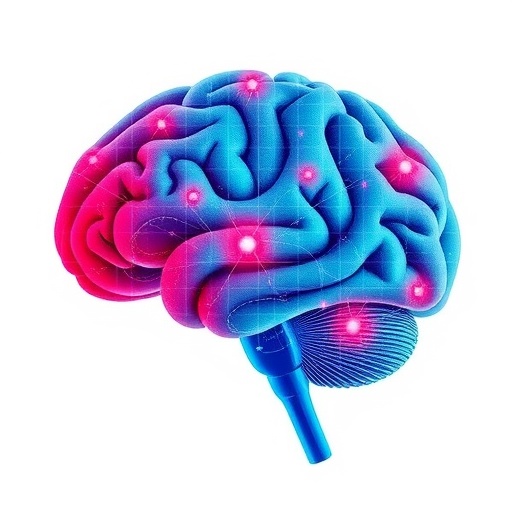A groundbreaking study conducted by researchers at University College London has unveiled a novel pathway to potentially slow down the progression of glioblastoma, the most aggressive and fatal form of brain cancer. By targeting the brain’s response to nerve cell injury caused by tumor growth, scientists discovered that the normally protective process of axon degeneration paradoxically fuels tumor expansion and neurological decline. This revelation could pave the way for innovative therapeutic interventions that not only retard tumor progression but also preserve brain function, addressing two critical challenges in glioblastoma treatment.
Glioblastomas are notorious for their rapid growth and infiltrative nature, often rendering conventional treatments such as surgery, chemotherapy, and radiotherapy insufficient to significantly extend patient survival beyond 12 to 18 months. These malignant tumors arise from normal glial cells that acquire genetic mutations, transforming them into highly invasive and resilient cancer cells. One of the major hurdles in understanding and treating glioblastomas has been their late-stage diagnosis, which occurs after tumors have become large and biologically complex. The UCL team thus adopted a mouse model with genetically engineered glioblastomas that closely resemble human disease in its earliest stages, allowing the dissection of tumorigenic mechanisms while tumors are still nascent.
The researchers observed that early-stage glioblastomas preferentially invade the brain’s white matter, regions densely populated with axons—the long, threadlike extensions of neurons responsible for transmitting electrical signals. Invasion of these axonal-rich areas resulted in mechanical compression and injury to the axons, triggering Wallerian degeneration, a process by which damaged axons are systematically dismantled and removed. Central to this process is the protein SARM1, which initiates axonal self-destruction by depleting NAD⁺—a critical coenzyme involved in cellular energy metabolism.
In a striking twist, this axonal degeneration response, typically protective by preventing the accumulation of dysfunctional cellular components, was found to inadvertently enhance glioblastoma aggressiveness. The breakdown products and ensuing inflammatory milieu created by the degeneration appeared to provide the tumor with a microenvironment conducive to accelerated growth. In essence, the brain’s attempt to clear damaged neurons unintentionally promotes tumor progression, underscoring the complex interplay between neurodegeneration and cancer biology.
To explore this phenomenon, the investigators engineered mice lacking the SARM1 protein, effectively halting the axon degeneration cascade. Remarkably, these mice developed glioblastomas that remained in less aggressive states, exhibited slower growth rates, and maintained neurological functions far longer than their normal counterparts. Survival was significantly extended, and the debilitating symptoms typical of glioblastoma were markedly reduced. These findings suggest that inhibition of SARM1-mediated axonal breakdown disrupts the supportive niche tumors exploit, thereby impeding malignant evolution.
This conceptual breakthrough offers a paradigm shift: targeting the neuronal response to tumor-induced injury, rather than the tumor cells per se, may yield substantial therapeutic benefits. Importantly, pharmaceutical agents designed to block SARM1 activity are already in development for neurodegenerative diseases characterized by axonal damage, such as traumatic brain injury and motor neuron disease. The repurposing of such inhibitors for glioblastoma treatment offers a promising translational avenue that could accelerate clinical application.
Professor Simona Parrinello, leading the UCL Cancer Institute team, emphasized the significance of intervening at early disease stages. “Most glioblastomas are diagnosed when they are already advanced, limiting treatment efficacy,” she explained. “Our insights into the early tumor-axon interactions reveal an opportunity to lock tumors into a less malignant state, preserving brain functionality and potentially improving survival outcomes.” This underscores the critical need to develop diagnostic methods allowing earlier detection of glioblastoma, enabling timely administration of SARM1 inhibitors or similar therapeutics.
The study further highlights the intersection of cancer and neurodegeneration as emerging frontiers in biomedical research. By illuminating how glioblastomas co-opt neurodegenerative processes, researchers can better understand the tumor microenvironment and immune interactions that influence disease trajectory. This integrative approach could identify additional molecular targets and biomarkers, refining personalized treatment strategies and ultimately transforming patient care.
Furthermore, the UCL team demonstrated that artificially inducing axonal injury accelerated tumor progression in their mouse model, reinforcing the causative link between nerve damage and glioblastoma aggressiveness. These experiments bolster the argument that controlling or preventing axonal injury responses can modulate tumor behavior. Clinical translation of these findings could involve combination therapies that pair standard oncological treatments with agents protecting the nervous system from tumor-associated damage.
Beyond laboratory evidence, this study resonates deeply with patient advocates and families affected by glioblastoma. The Oli Hilsdon Foundation, dedicated to funding glioblastoma research in memory of Oli—a young man whose life was cut short by the disease—expressed optimism about the potential impact of this discovery. Their support, along with funding from organizations such as Cancer Research UK and the Brain Tumour Charity, has been instrumental in advancing this pioneering research.
Despite its promise, the research remains in preclinical stages, and significant work is necessary before SARM1 inhibitors can be evaluated in human trials. Challenges include confirming safety and efficacy in diverse patient populations and understanding long-term effects of modulating neurodegenerative pathways during cancer treatment. Nevertheless, this study charts a hopeful course toward more effective and holistic therapies for glioblastoma, a cancer that has long defied medical breakthroughs.
In conclusion, the identification of axon degeneration as a driver of glioblastoma progression marks a shift in how scientists conceptualize brain cancer pathophysiology. By interrupting the molecular signals that facilitate tumor exploitation of neural injury, new therapeutic windows appear on the horizon. This innovative line of research exemplifies the power of interdisciplinary approaches, connecting oncology with neurobiology to tackle one of the most formidable cancers known to medicine.
Subject of Research: Animals
Article Title: (Not explicitly provided in the source content)
News Publication Date: (Not explicitly provided in the source content)
Web References: https://doi.org/10.1038/s41586-025-09411-2
References: Published in Nature, funded by Cancer Research UK and the Brain Tumour Charity
Image Credits: (Not provided)
Keywords: Glioblastomas, Brain cancer, Cancer, Diseases and disorders, Health and medicine




